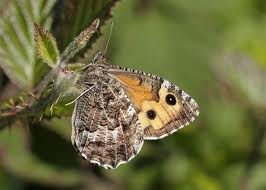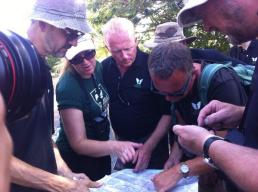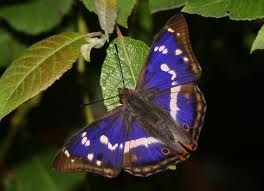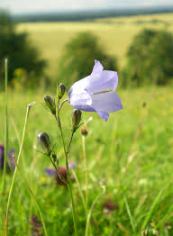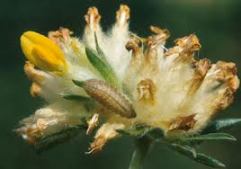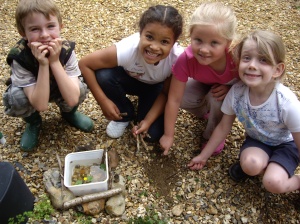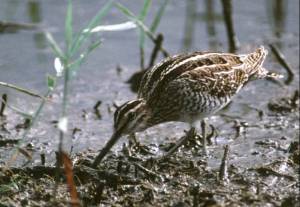The Government’s performance in protecting our environment has come under scrutiny in Nature Check 2013,1 a report published today by 41 environmental organisations, under the umbrella of Wildlife and Countryside Link.2
The proportion of nature commitments on which the Government is failing has steadily worsened during its term in office. Areas in which it is falling short include protection of the Green Belt, farm animal welfare, designating the full network of Marine Conservation Zones and reversing wildlife declines.
The Nature Check report urges the Government to recognise the value of nature to both the economy and to the people of Britain. Alongside the report, a ComRes survey of more than 2,000 adults has been published, which reveals the love people have for the British countryside.3
Notably, 83% of British adults believe the natural environment should be protected at all costs, while only a quarter think the Government is doing enough to protect our landscapes and wildlife.
The survey shows that the majority of people want politicians to do more to protect nature and the countryside. The message from the public is clear – they want healthy seas and landscapes providing rich habitats for thriving wildlife. But sadly, most species in this country are in decline.
We’re told an economy in crisis is a higher priority than nature in crisis. Yet the Government is missing a huge opportunity – a healthy environment helps the economy and enhances people’s health and wellbeing.
Our wetlands alone provide a home for millions of migrating birds and other wildlife, but they also give us £350 million worth of flood protection a year through storing rainwater that would otherwise run off our roads and fields into our towns. Without wetlands, the cost of resulting flood damage would need to be met by businesses and Government and passed on to the public through higher prices and higher taxes.
The report rates four of the Government’s commitments to the natural environment as green (good progress), with 12 amber (moderate progress) and nine red (failing). Of the commitments which were rated in last year’s report, 20% have got worse and only 10% have improved.
The ComRes survey shows the personal value of the environment to people in Britain, alongside their view of the Government’s performance. Findings include:
Regarding the environment:
• 91% of people agree we should improve the condition of the natural environment for future generations.
• 85% agree the natural environment boosts their quality of life.
Regarding the Government:
• 21% agree the current Government is the ‘greenest Government ever’.
• 28% agree the Government is taking the right steps to leave the natural environment in a better condition for future generations
The report Nature Check 2013 and the ComRes Countryside Survey, both published on 19 November 2013, are available online www.wcl.org.uk/nature-check.asp.
Multimedia available: https://www.dropbox.com/sh/8cvv8kb4m6tbp76/qj5vua2LPd?n=112572258.
Notes
1. Nature Check 2013 is an analysis of the Government’s delivery against 25 of its natural environment commitments. The report found:
Good progress on Common Fisheries Policy, the Government’s response to ash dieback and its global leadership on protection of elephants, rhinos and whales.
Moderate progress on water and agriculture policies, including the Water Bill and reforms to the Common Agriculture Policy. Many policies are rated amber pending certainty on what’s happening to them – for example the welcome recent developments on wildlife trafficking are tempered by a lack of commitment to long-term funding for the National Wildlife Crime Unit. There is an opportunity for good progress in many of these areas.
Failure to implement the Biodiversity Strategy, provide an ecologically coherent network of Marine Conservation Zones, ensure environmentally-friendly farming and farm animal welfare, take an evidence-based approach to badger control for tackling bovine TB, protect the environment within the planning system and provide holistic flood control.
Nature Check 2013 makes three recommendations to Government to help it to improve its performance on the environment over the next 18 months:
• To provide strong leadership and a clarity of purpose that will reverse the catastrophic decline in wildlife and reconnect people with nature;
• To enable the statutory nature conservation bodies fulfil their critical role as champions of nature; and
• To enforce the laws to protect our environment.
The 41 organisations supporting this report are: Amphibian and Reptile Conservation; Badger Trust; Bat Conservation Trust; British Ecological Society; British Mountaineering Council; Buglife – The Invertebrate Conservation Trust; Bumblebee Conservation Trust; Butterfly Conservation; Campaign for National Parks; Campaign to Protect Rural England; Client Earth; Council for British Archaeology; Environmental Investigation Agency; Freshwater Biological Association; Freshwater Habitats Trust; Friends of the Earth; Greenpeace; Hawk and Owl Trust; Humane Society International; International Fund for Animal Welfare; The Mammal Society; Marine Conservation Society; MARINElife; Open Spaces Society; People’s Trust for Endangered Species; Plantlife; Ramblers; The Rivers Trust; RSPB; RSPCA; Salmon & Trout Association; Shark Trust; Waterwise; Whale and Dolphin Conservation; Wildfowl and Wetlands Trust; Wildlife Gardening Forum; The Wildlife Trusts; Woodland Trust; WSPA; WWF-UK; and Zoological Society of London.
2. Wildlife and Countryside Link is a coalition of voluntary organisations concerned with the conservation and protection of wildlife, countryside and the marine environment. Our members practise and advocate environmentally sensitive land management, and encourage respect for and enjoyment of natural landscapes and features, the historic environment and biodiversity. Taken together our members have the support of over 8 million people in the UK and manage over 750,000 hectares of land. For more information see: www.wcl.org.uk.
3. The ComRes Countryside Survey was conducted for Wildlife and Countryside Link, and interviewed 2,042 GB adults online between 11 – 13 October 2013. The survey report includes comparisons with a similar survey conducted by ComRes of 2,055 adults from 16 – 18 November 2012. Data were weighted to be representative of all GB adults aged 18+. ComRes is a member of the British Polling Council and abides by its rules. Full data tables are available at www.ComRes.co.uk.

